The Mitsubishi Triton has long been one of the most popular 4×4 utes in Australia, and for good reason: price.
While the new Triton has gone up a level on the price scale, it still represents great value for money compared to some of the more expensive utes like the Ford Ranger and Toyota HiLux.
For those who want a Triton for 4×4 touring, we reckon the GLX-R hits the sweet spot at $56,490 drive away due to its impressive list of standard equipment as well as being the most affordable model in the range with Mitsubishi’s excellent Super Select 4WD-II selectable on-demand 4×4 system. Base colours for the Triton GLX-R are white and red, while premium paint (blue, silver, grey and black) costs an extra $740.
While previously not as powerful as some of its competitors, the Triton’s new 2.4L bi-turbo-diesel engine now musters a respectable 150kW and 470Nm, and it’s mated to a smooth shifting six-speed auto transmission. The Triton now also matches its class competitors in terms of towing, with a maximum braked capacity of 3500kg.
Standard kit on the Triton GLX-R includes black 18-inch alloy wheels, black sports bar, tailgate assist, a nine-inch touchscreen with satnav, a seven-inch multi-information display, rear cross traffic alert, lane departure prevention, traffic sign recognition, TPMS, adaptive cruise control, forward collision mitigation and seven air bags.
The Triton GLX-R’s Super Select 4WD II system allows the vehicle to be driven on the road in two-wheel drive or full-time 4×4. For off-road use the system can be set to high-range or low-range 4×4, both with the centre diff locked. Off-road capability is enhanced thanks to seven selectable drive modes (Normal, Eco, Gravel, Snow, Mud, Sand and Rock) aa standard fitment rear differential lock.
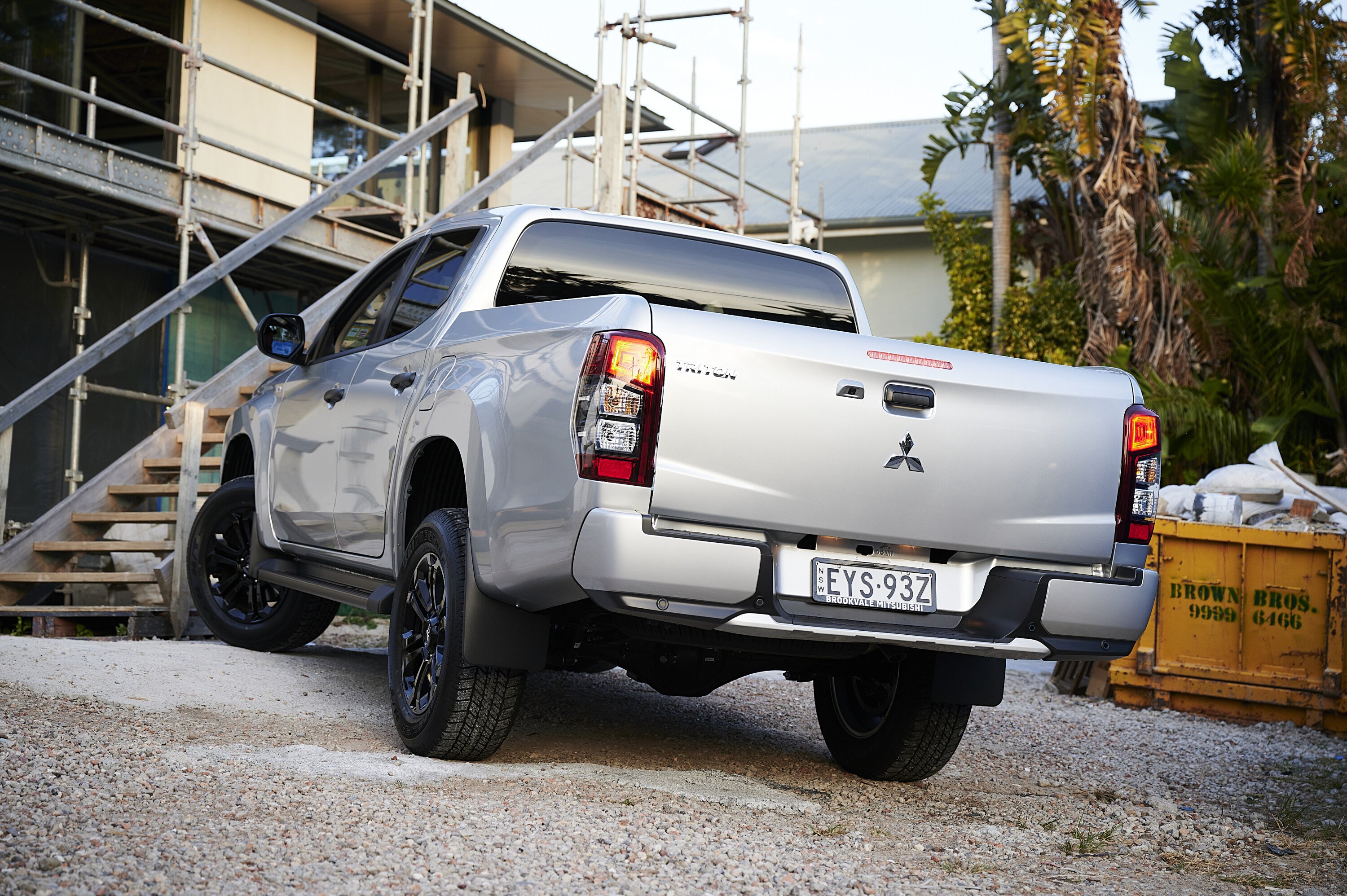
The first things to consider when modifying any 4×4 to make it better for touring include tyres, suspension and protection equipment. Secondary items include storage systems, canopies, roof racks and the like, all of which will have a bearing on what suspension system you will need to fit.
If you’re going to fit a steel bull bar ($2500+), steel side rails and sidesteps ($1000+), winch ($1200-$3000) and driving lights ($700), all of which we’d strongly recommend, you will need a suspension system that can cope with all of that weight at the front of the vehicle, as well as springs and dampers at the rear matched to whatever load you’re likely to have on board while touring. A quality suspension system from the major manufacturers will set you back $3000 or more, but there are cheaper alternatives that will still handle heavier loads than the standard suspension, and give the Triton a lift of up to 40mm.
As with any 4×4, you will need to fit quality Light Truck tyres to the Triton GLX-R if you want it to survive traversing rocky off-road terrain and forging through remote deserts; there are several LT all-terrain and mud-terrain options in the standard 265/60R18 size priced from around $450 to $500 a tyre from the likes of BFGoodrich, Cooper and Toyo, or with a suspension lift you could go up to a LT275/70R18.
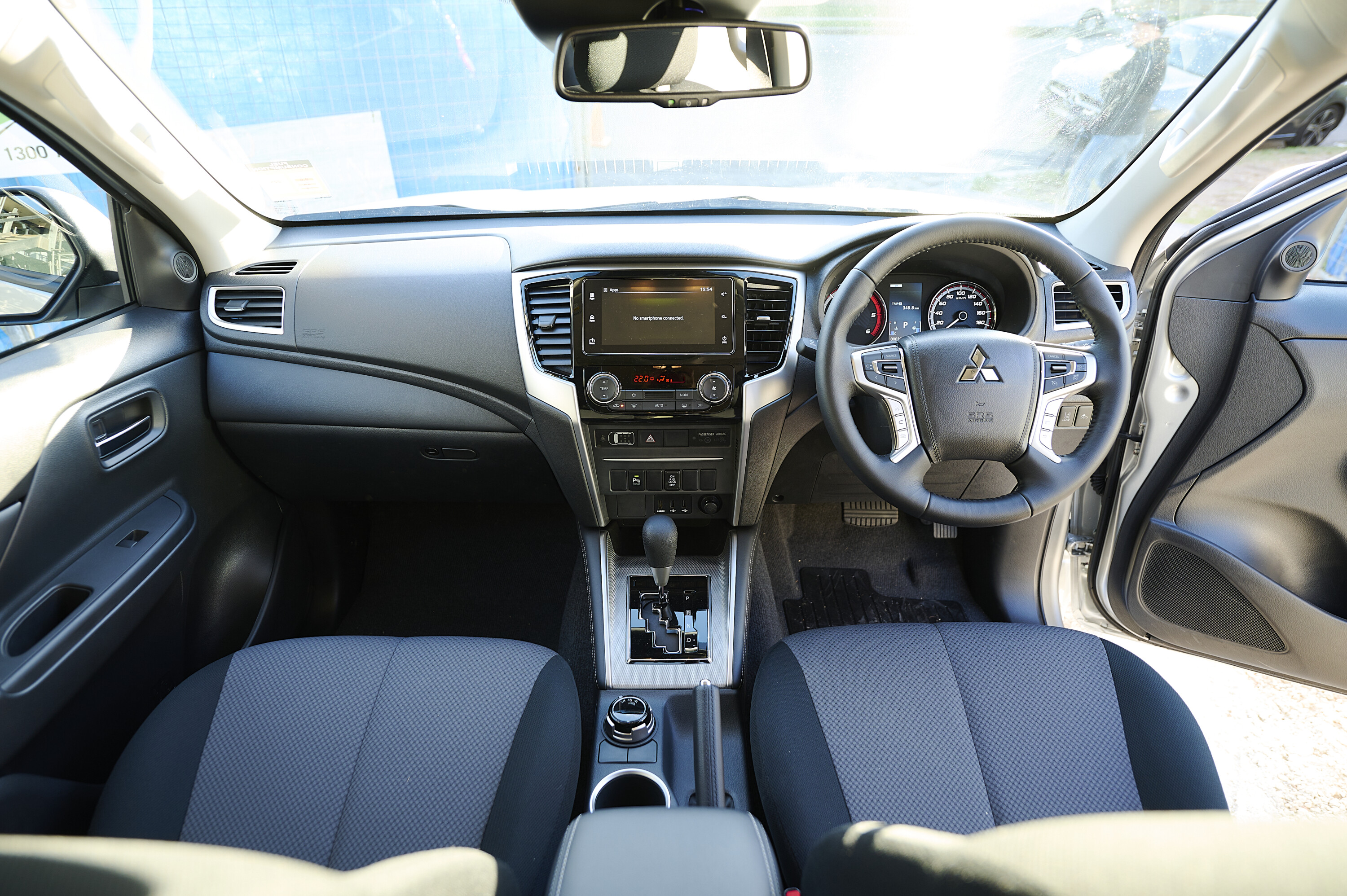
While a canopy over the tub provides a secure and weatherproof compartment that’s convenient for touring, it does detract from the vehicle’s versatility when you want to use it as a ute. An alternative on the Triton GLX-R is to fit a quality roller shutter so you can secure your gear when needed but still be able to haul larger items too, such as dirtbikes. A manual roller shutter will cost $1300+ while an electric one will cost around $2000+. A bed extender allowing a dirtbike to sit in the tub with the tailgate down can be had for as little as $350, but you will also have to factor in a number-plate mount with lights ($120 or so) and an auxiliary number plate (around $50 depending on what state you live in).
Of course, with a roller shutter, you need to ensure your portable fridge/freezer has a low enough profile to fit, but there are plenty on the market. You might also wish to add a roof platform (around $1700) to carry light-weight gear and to fit an awning.
You should also factor in the other usual 4×4 touring accessories such as a snorkel ($700), an auxiliary or long-range fuel tank ($1200-$1500), UHF radio and antenna ($400-$700), lithium auxiliary battery and charger ($1500+) and under-vehicle protection ($800-$1000).
I used to think the Sport model grade hit the sweet spot in the Ranger line-up, but with this latest generation it has gone upmarket with a corresponding increase in price.
So for my money the Ranger XLS now represents the best value for money for those looking for a double-cab ute for 4×4 touring. You should be able to pick one up for around $64k drive away, depending on where you live and what colour/options you want. Personally, I’d splurge $700 on premium paint (Meteor Grey or Aluminium) so it didn’t look like a workhorse.
The Ranger XLS is offered solely with the 2.0-litre bi-turbo diesel engine mated to a 10-speed automatic transmission. While not as potent as the V6 model, with a claimed 154kW and 500Nm on tap and a sweet-shifting 10-speed automatic transmission, the 2.0L driveline still offers plenty of performance… even when fitted with accessories for touring and with a load on board.
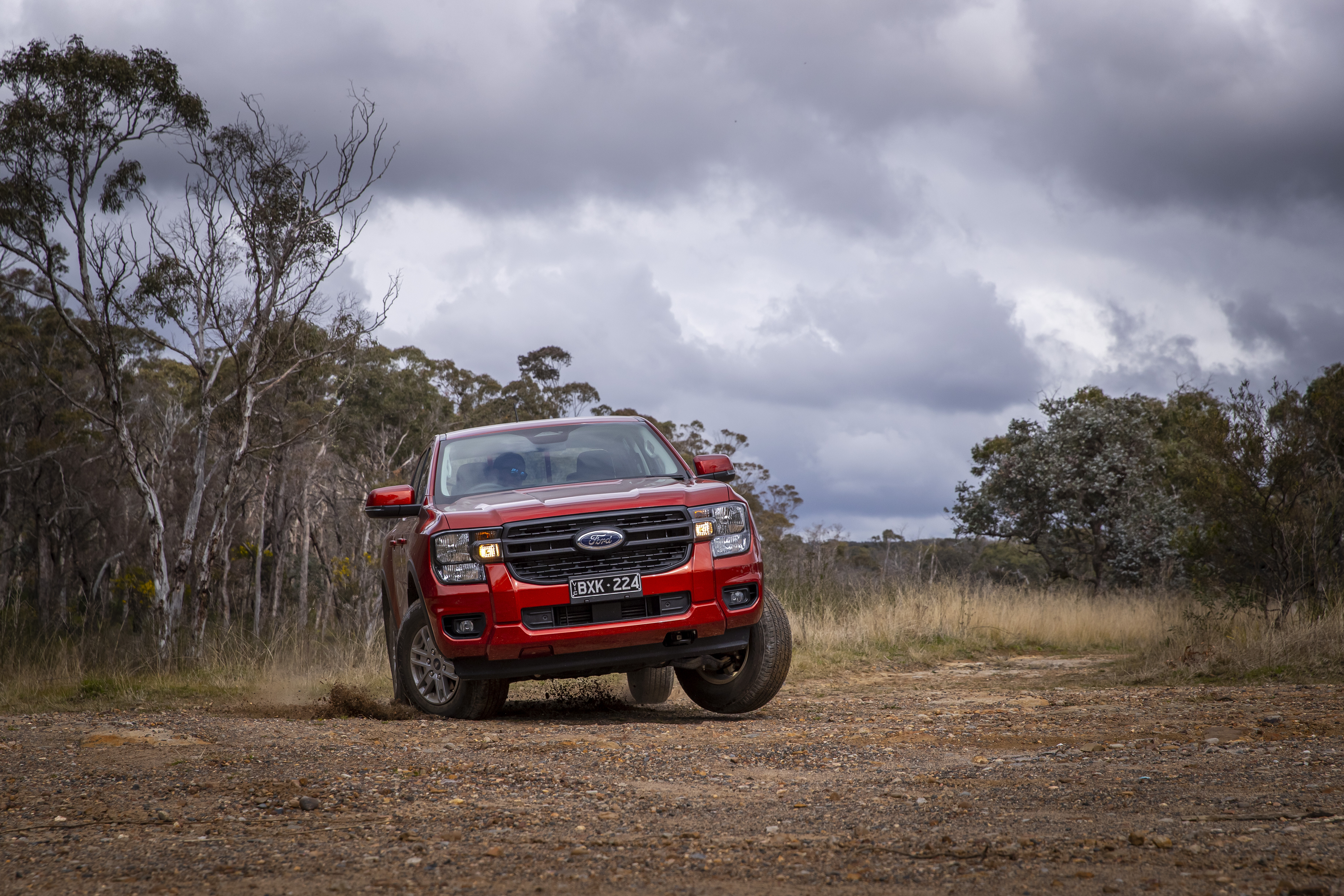
The Ranger XLS offers a good mix of tech and equipment but without many of the superfluous features of higher-grade models. Standard convenience and safety kit includes a 10.1-inch portrait touchscreen with FordPass Connect and built-in satnav, an eight-inch digital instrument cluster, dual-zone climate control air conditioning with rear vents, adaptive cruise control, lane keeping assist, blind spot monitor, cross traffic alert, AEB, nine airbags, cloth seats with eight-way driver adjustment and four-way passenger adjustment, and a power tailgate lock. Not bad for a lower-grade variant.
One of my favourite aspects of the XLS spec is the off-road friendly 16-inch wheel size, which allows for fitment of a wide range of all-terrain and mud-terrain tyres. Also beneficial for 4×4 touring is the standard tow hitch with integrated brake controller and the 400W power outlet in the tub.
Despite its decent list of standard equipment, there are still many improvements that can be made to the Ranger XLS for those who want to use it for 4×4 touring. First up, you’ll need to fit a decent aftermarket suspension kit that will cope with the added weight of accessories and gear.
Most suspension manufacturers will have kits designed to handle certain loads such as a vehicle with no accessories, a vehicle with a bull bar fitted, and a vehicle with a bull bar and winch fitted, as well as the load you expect to carry in the tub, such as a 0–300kg load or a constant 300kg load, or even a GVM upgrade. Suspension upgrades vary greatly in quality and price, with budget options starting from as little as $1300 plus fitting, to high-end kits at more than $3500 plus fitting.
On the Ford Ranger XLS, I would fit a quality steel bull bar for protection against animal strikes and to house a 9000–12,000lb electric winch ($1200–$3000) for vehicle recoveries. For those who want their bull bar covered by their new vehicle warranty, Ford is now a reseller of ARB products, and for a Summit Bar MkII you’d be looking at around $4700 fitted. You will also need a decent set of LED driving lights ($700+ a pair) or an LED light bar ($350+) to complement the Ranger XLS’s not-so-fab halogen headlights.
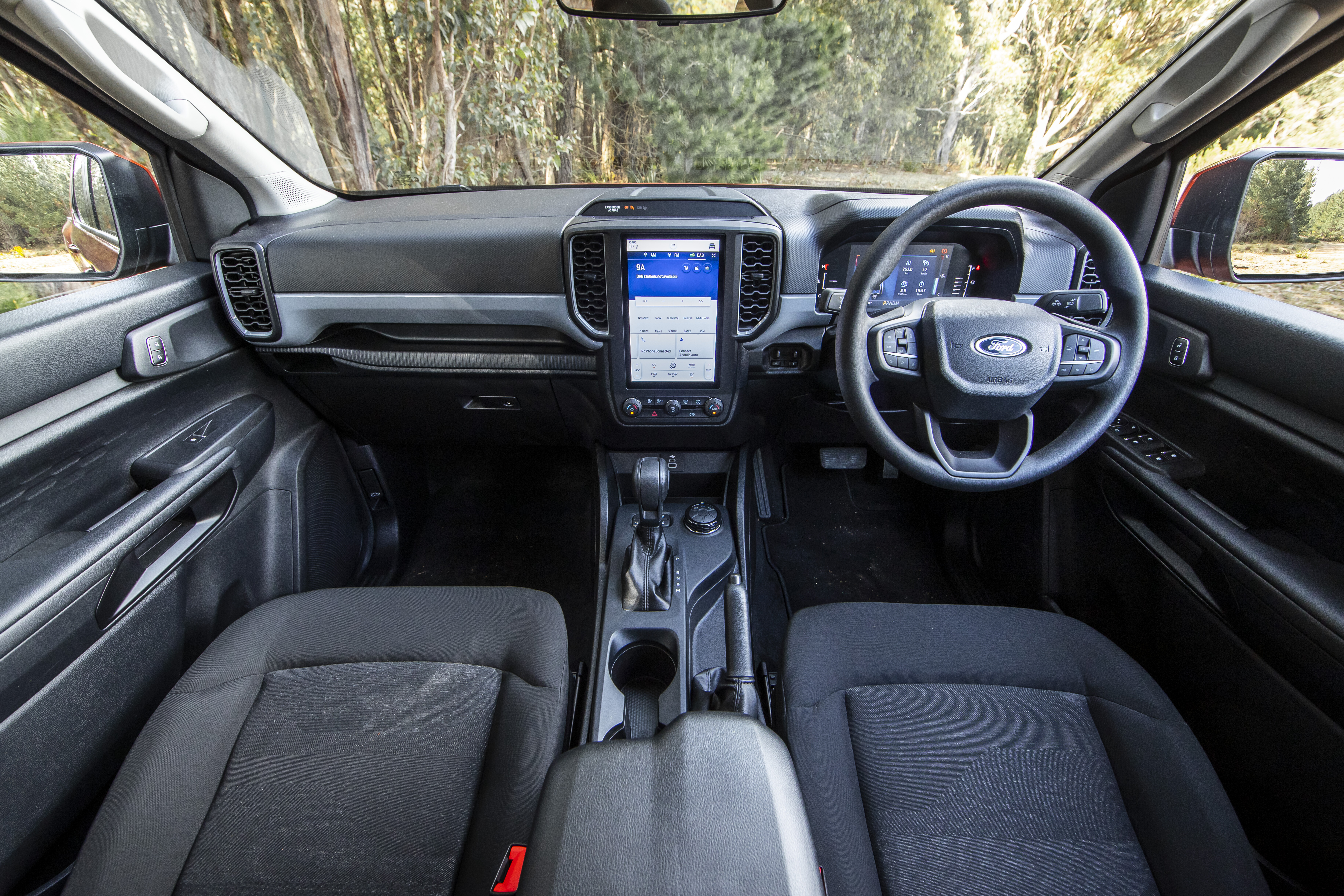
While utes are great for carrying a lot of gear in the tub, without a tonneau, a roll-top or a canopy, they don’t offer any protection for said gear. For 4×4 touring, a canopy is an ideal solution as it provides a large and secure storage area. There are plenty of options on the market such as fibreglass canopies from the likes of ARB, TJM and Ironman 4×4 ($3000–$4000), and aluminium or steel tub toppers ($2000–$4000).
Other accessories you’ll need for 4×4 touring include five decent all-terrain or mud-terrain Light Truck (LT) tyres ($2000+), a snorkel ($700), a quality UHF and antenna ($400–$700), a dual-battery setup with lithium battery and charger ($1500+), a winch recovery kit ($200+), and perhaps a drawer system with a fridge slide ($400–$2000).
As you can see, it’s not hard to drop another $20k-plus on accessories to transform a Ford Ranger XLS into a well set up 4×4 tourer, but once you’re done you’ll have a comfortable vehicle with excellent off-road capability that can take you almost anywhere in the country.
The Isuzu D-MAX has long been a favourite with four-wheel drive tourers and those who tow vans and the like thanks to its rugged simplicity and great reputation for reliability.
For my money, the D-MAX LS-M crew cab ute is the pick of the range for those tasks as it is mechanically identical to the higher-grade models but is more affordable and fitted with off-road friendly 17-inch wheels instead of 18s. You should be able to pick up a new D-MAX LS-M crew cab for around $61K drive away, depending on your location and colour preference.
Notably, the LS-M isn’t fitted with factory side steps that you would likely bin anyway in favour of aftermarket steel ones, and it isn’t fitted with a factory tow hitch, which you would need to get rid of if you fitted an aftermarket rear-step tow bar, which offers the added bonus of protecting the rear bodywork when dropping off rock shelves or exiting steep gullies.
The D-MAX LS-M is powered by a proven 3.0-litre four-cylinder turbo-diesel engine that makes a claimed 140kW and 450Nm, and while no match for the class leaders, it still offers decent performance and is mated to a smooth-shifting six-speed automatic transmission.
A part-time 4×4 system with high and low ratios and a rear diff lock is complemented by an effective traction control system, which provides decent off-road capability, and the D-MAX LS-M offers the class standard 3500kg maximum braked towing capacity.
It might be one of the lower grade D-MAX models but even in LS-M spec it is loaded with standard convenience and safety equipment including emergency brake assist, lane keeping assist, hill descent control, adaptive cruise control, LED headlights, eight air bags, blind spot monitor, emergency brake assist, lane keeping assist, rear cross traffic alert, traffic sign recognition, hill descent control and more.
It gets a smaller 4.2-inch (instead of seven-inch) multi instrument display than higher grades and a smaller eight-inch (instead of nine-inch) touchscreen, as well as single-zone manual air conditioning instead of dual-zone climate control.
Thanks to its 17-inch wheels, you can easily (and economically) go up from the standard 255/65R17 tyres to a set of LT285/70R17 all-terrains or mud-terrains at around $400 to $500 a pop. You can also fit an aftermarket suspension kit tailored to the accessories you will fit to your D-MAX and the load you expect it to carry. If you’re intending on 4×4 touring, or even towing a van around the country, those accessories should include a bull bar ($1500-$3000), under vehicle protection ($300-$600), side rails and steps ($500-$2500) and the aforementioned rear step tow bar ($1000-$2000).
A quality 9000lb to 12,000lb winch ($1200-$3000) will help get you out of any strife when driving off-road, while some decent LED driving lights ($700) will hopefully give you enough warning that you won’t have to test the strength of your new bull bar.
How you kit out the tub of your D-MAX will depend on what you need to use it for. If you still want the convenience of an open tub for carrying stuff to the tip on the weekends then a lockable roller shutter ($1300-$2000) or a hard lid ($1500-$3500) is a good idea, as you’ll have a secure and weatherproof load space when you need it. Bear in mind that you might need to fit a dust-seal kit around the tailgate ($70-$100). If you don’t need that ute versatility, a fibreglass canopy ($3000-$5000) or an aluminium or steel tub topper ($2000-$3000) is a good option that will provide a large and secure storage space.
Although the D-MAX LS-M has a decent payload capacity of 1070kg, a towing capacity of 3500kg and a GCM of 6000kg, those who want to tow very large caravans or other big trailers while carrying weight in the vehicle might want to consider a GVM/GCM upgrade, which is best fitted prior to the vehicle’s initial registration. This will set you back around $6K installed, but really is a good investment for those with heavy hauling in mind.
Other than that, you will need the usual 4×4 touring accessories such as a decent snorkel ($600-$1000), a dual battery system and lithium battery ($1500+) and perhaps a roof platform ($1500-$2000) for extra gear and awning fitment.
GWM has recorded its highest-ever monthly sales in Australia, delivering a total of 5464 vehicles to consumers in June 2025.
This marks a 30.9 per cent increase compared to the same month last year, and a 24.4 per cent rise over its previous monthly record set in March 2025. As a result, GWM climbed to seventh spot in the national manufacturer sales rankings for the month, with a 4.5 per cent share of the Australian new vehicle market.
With six months accounted for, GWM closed out the first half of 2025 with 25,189 vehicles sold, setting a new mid-year record for the brand in Australia. Industry data suggests the company is on pace to break the 50,000-unit mark by year’s end.
The brand’s recent growth has been driven largely by demand for its diesel and 4×4 models. In the first half of 2025, GWM introduced an upgraded Cannon ute with a new diesel powertrain and a towing capacity of 3500kg. The diesel variant of the Tank 300 was also released, offering 3000kg towing. The new Tank 500 Vanta was also added to the line-up, and June marked the first month of sales for the Cannon Alpha PHEV.
Sales of the Cannon reached 1074 units in June, as models continue to roll out following the launch of the updated model back in February this year. The Cannon Alpha PHEV saw 269 units delivered in its first full month, with GWM stating that PHEV variants represented 45 per cent of total Cannon Alpha sales.
GWM’s Tank range also performed strongly, with 783 total units sold across the Tank 300 and Tank 500 line-ups. The Tank 300 recorded 630 units, its best monthly result since October 2023 and an 84.2 per cent increase year-on-year. Diesel continues to dominate interest in this model, now representing 62 per cent of Tank 300 sales.
“Delivering this level of growth in a competitive and constantly evolving market is a direct reflection of the dedication shown by our dealer network, partners, and of course our GWM staff,” said John Kett, Chief Operating Officer of GWM ANZ.
“2025 was always set to be more competitive than 2024, with new brands entering and established players refusing to yield. GWM won’t be dialling back in the second half – we’re maintaining EOFY pricing to reinforce our commitment to being a price accessible brand.
“From July 2025, we’ll also accelerate the rollout of our next-generation technology, led by innovations in HEV, Hi4, and Hi4T PHEV systems across key models like the Cannon Alpha, Haval H6, and Tank 500.”
GWM also saw gains in its passenger SUV range. The Haval Jolion delivered a record 2000 units in June, claiming second spot in the highly competitive Small SUV segment. The Haval H6, which is now in run-out, recorded 1278 sales for the month – up 4.2 per cent from June last year.
JAC Motors has slashed the price of its T9 dual-cab, with the budget-friendly ute now starting from below $40,000 drive-away.
As part of a limited-time deal – running from July 1 until August 31 – the entry-level T9 Oasis is priced at $39,990 drive-away and the JAC T9 Haven from $43,990 drive-away. These prices apply nationwide, except in Western Australia, where drive-away costs are $1000 higher for both models.
This price drop offers a saving of roughly $5000 off the regular drive-away price.
“The JAC T9 has already proven itself as Australia’s safest ute, and now we’re making it even more compelling for Australian buyers,” said JAC Motors Australia Managing Director, Ahmed Mahmoud.
“At $39,990 drive-away, the JAC T9 Oasis is outstanding value. Not only does it deliver class-leading safety in a tough and reliable package, it comes with the peace of mind of JAC’s industry-leading JARA seven-year, unlimited kilometre warranty,” added Mahmoud.
The T9 was named Australia’s safest ute in 2024, following ANCAP’s weighted safety results. It received a five-star rating in August 2024, with standout scores: 85 per cent for adult occupant protection, 87 per cent for both child occupant and vulnerable road user protection, and 89 per cent for safety assist.
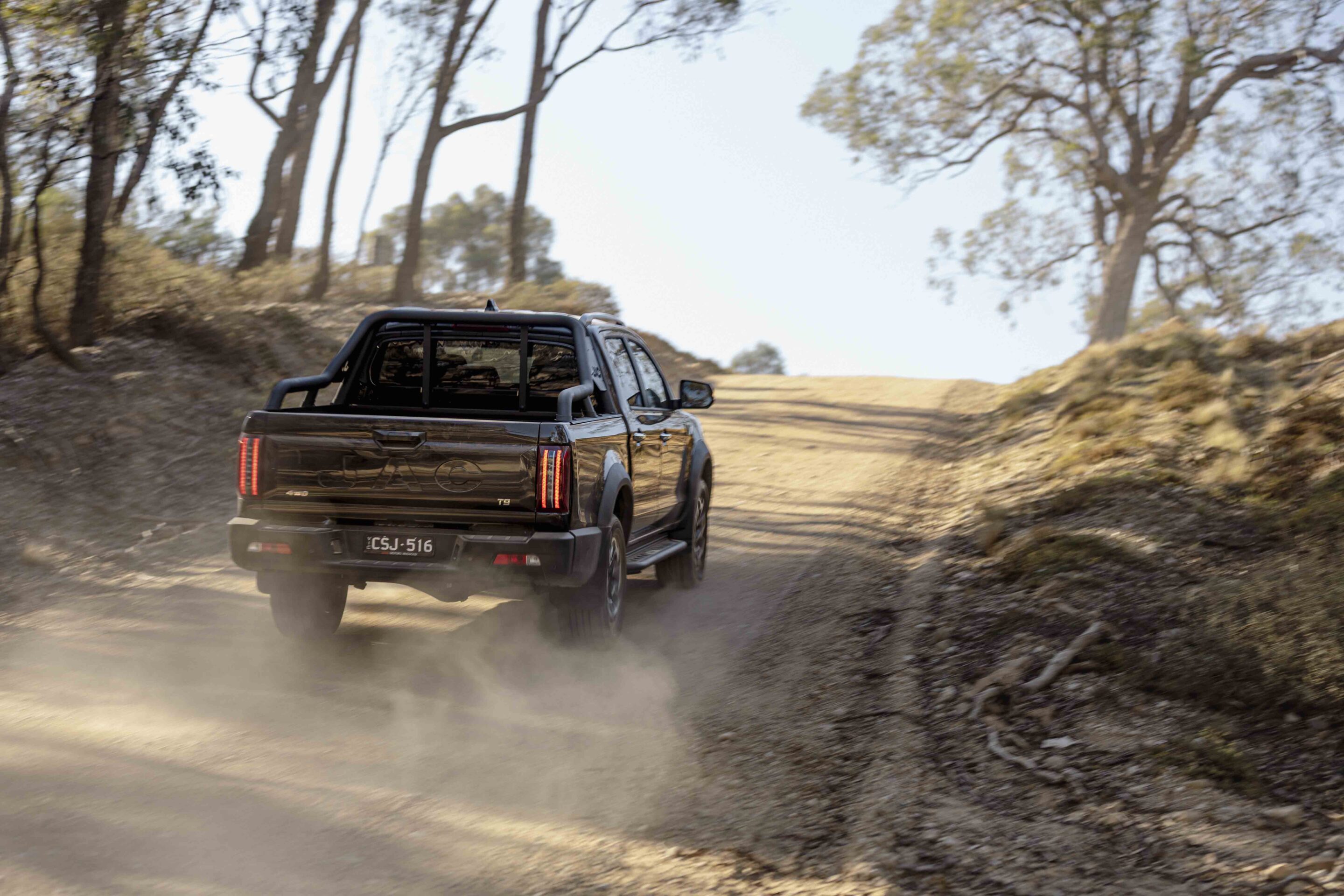
It’s powered by a 2.0-litre turbo-diesel producing 120kW and 410Nm, paired with a ZF eight-speed automatic transmission. The ute offers a 1045kg payload capacity and a tub wide enough to fit a full-sized Australian pallet.
The T9 Oasis includes a 10.4-inch infotainment touchscreen, seven-inch digital instrument cluster, smartphone mirroring, wireless charging, LED lighting, climate control, reversing camera, rain-sensing wipers and 18-inch alloy wheels. Among a suite of upgrades, the Haven variant adds a 360-degree camera, heated front seats and rear privacy glass.
This offer applies to MY24 stock only.
Volkswagen Australia has refreshed its Amarok range for the 2025 model year, led by the introduction of the limited-edition Amarok 10 Deserts Edition.
Priced from $69,990 drive-away, this new variant is limited to just 300 units nationwide and features a 40mm suspension lift, increasing ground clearance to 275mm. The off-road-ready vehicle rides on Continental ATR tyres fitted to 17-inch satin black wheels and includes VW underbody protection and all-weather floor mats. The exterior is distinguished by a black sports bar, soft tonneau cover, and black ‘10 Deserts’ decal that stretches across both the front and rear doors.
Alongside the launch of the 10 Deserts Edition, Volkswagen has announced several updates across the broader MY25 Amarok line-up. The Amarok Style, PanAmericana and Aventura variants now come standard with 230V power sockets (Australian plug pattern), backed by an integrated 400W inverter. Trailer Assist is now a standard feature on these models as well, and the Rear Traffic Alert system has been revised to integrate with the trailer support functionality.
VW has also introduced new ‘Tray’ cab-chassis variants. The Amarok Core, Life and Style are now available with a factory-fitted alloy tray, measuring 1900mm in external width, 1835mm in internal width, 1650mm in internal length, and tipping the scales at 132kg. This alloy tray will also be offered as a dealer-fitted accessory across the broader Amarok range and will cost an additional $4000. A steel tray weighing 243kg is also available as a dealer-fit option.
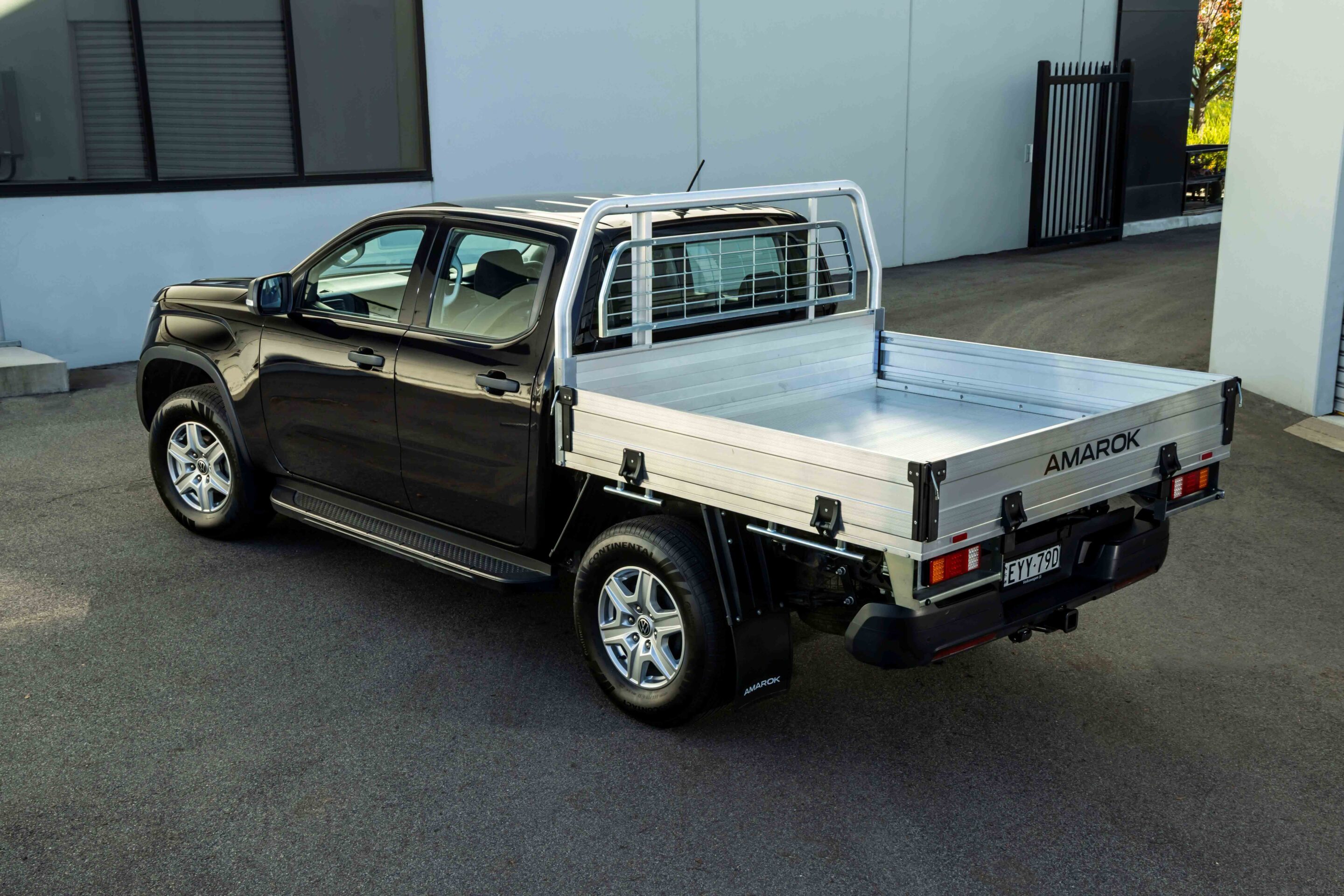
Drive-away pricing for the updated MY25 Amarok range starts at $55,990 for the Core TDI405. The Amarok Life TDI500 follows at $61,990, while the new 10 Deserts Edition, based on the TDI500 platform, lands at $69,990.
The Style variants are priced at $72,740 for the TDI500 and $76,740 for the TDI600. Sitting above them is the PanAmericana TDI600 at $79,990. At the top of the range, the Aventura is offered in two powertrains: the petrol-powered TSI452 at $79,990 and the flagship diesel TDI600 at $82,990.
The updated MY25 Volkswagen Amarok line-up will begin arriving in dealerships during the second half of 2025.
2025 VW Amarok RRP
| Model | Engine | RRP (AUD) |
|---|---|---|
| Amarok Core | TDI405 | $55,490 |
| Amarok Life | TDI500 | $59,490 |
| Amarok 10 Deserts Edition (new) | TDI500 | $68,490 |
| Amarok Style | TDI500 | $69,740 |
| Amarok Style | TDI600 | $73,740 |
| Amarok PanAmericana | TDI600 | $78,990 |
| Amarok Aventura | TSI452 | $79,990 |
| Amarok Aventura | TDI600 | $82,990 |
2025 VW Amarok manufacturer’s drive-away pricing
| Model | Engine | Drive-Away Price (AUD) |
|---|---|---|
| Amarok Core | TDI405 | $55,990 |
| Amarok Life | TDI500 | $61,990 |
| Amarok 10 Deserts Edition (new) | TDI500 | $69,990 |
| Amarok Style | TDI500 | $72,740 |
| Amarok Style | TDI600 | $76,740 |
| Amarok PanAmericana | TDI600 | $79,990 |
| Amarok Aventura | TSI452 | $79,990 |
| Amarok Aventura | TDI600 | $82,990 |
Kia has released pricing for the Tasman’s range of genuine accessories, ahead of its arrival in showrooms next month.
The accessories line-up – released on the Kia Australia website – confirms that buyers will be able to option everything from side steps, sports bars, roof racks and tub racks to soft tonneau covers, electric roller shutters, canopies, and even a 36L portable car fridge. Pricing spans from less than $30 for items like trailer plug adaptors to over $6000 for premium canopy and shutter systems. Full pricing below 👇
The aftermarket sector has also begun gearing up for the Tasman’s launch, with companies like ARB and Utemaster already promoting a range of equipment.
ARB unveiled concept renders showcasing the ute equipped with a suite of accessories, including a bull bar, canopy and off-road wheels, offering punters an early look at how a fully kitted-out version might appear. Utemaster revealed two storage options: the Centurion Canopy and Load-Lid, both built tough for real-world use.
Showcasing its off-road capabilities, the flagship X-Pro variant recently proved its mettle by conquering the notoriously tough Beer O’Clock Hill – demonstrating the Tasman is built for weekend fun.
Earlier this month, Kia also confirmed drive-away pricing for the Tasman, with the entry-level S variant starting at $53,890; the SX at $58,490, the SX+ at $66,490), the X-Line at $70,990, and the X-Pro at $77,990. All 4×4 variants are powered by a 2.2-litre turbo-diesel engine producing 154kW and 440Nm, paired with an eight-speed automatic transmission and offering both part-time and terrain-specific driving modes.
The Kia Tasman goes on sale across Australia in July 2025.
Genuine accessory range
Interior
| Accessory | Price (RRP) |
|---|---|
| Tailored Floor Mats – Carpet | $183.00 |
| Tailored Floor Mats – Rubber | $155.00 |
| Tailored Floor Mats – Combination | $352.00 |
| Tailored Floor Mats – All Weather | $278.00 |
| Roadside Assist Kit | $168.00 |
| Aromatherapy Diffuser | $53.00 |
| Aromatherapy Diffuser – Refill | $17.00 |
Exterior
| Accessory | Price (RRP) |
|---|---|
| Bonnet Protector – Smoked | $193.00 |
| Bonnet Protector – Matte Black | $193.00 |
| Headlamp Protectors | $155.00 |
| Weathershields Set – Matte Black | $197.00 |
| Weathershields Set – Smoked | $197.00 |
| Side Steps – Tubular | $1,030.00 |
| Side Steps – Dual Platform | $1,705.00 |
| Sports Bar – Short Arm | $1,176.00 |
| Sports Bar – Long Arm | $1,271.00 |
Tub accessories
| Accessory | Price (RRP) |
|---|---|
| Soft Tonneau Cover – for Sports Bar | $1,065.00 |
| Commercial Canopy | $4,620.00 |
| Premium Canopy | $6,114.00 |
| Electric Roller Shutter Cover | $6,005.00 |
| Manual Roller Shutter Cover | $3,619.00 |
| Soft Tonneau Cover | $1,065.00 |
| Aluminium Tonneau Cover | $2,343.00 |
| Canopy Roof Bars | $517.00 |
| Tub Racks | $551.00 |
Roof and towing
| Accessory | Price (RRP) |
|---|---|
| Roof Rack Packing Kit | $106.00 |
| Roof Racks – Clamp Mount (S, SX, SX+) | $551.00 |
| Roof Racks – Roof Rail Mount (X-Line & X-Pro Only) | $572.00 |
| Towbar Kit with Trailer Wiring Harness | $1,123.00 |
| Towbar Kit – with Rear Recovery Points | $1,622.00 |
| Tow Ball Cover | $21.00 |
| 7-Pin Flat to 7-Pin Round Trailer Adaptor | $29.00 |
Lifestyle
| Accessory | Price (RRP) |
|---|---|
| Portable Car Fridge 36L | $1,573.00 |
| Multi Table | $204.00 |
| Two Bike Carrier – towball mounted | $1,474.00 |
| Three Bike Carrier – towball mounted | $1,907.00 |
Kia’s all-new Tasman has proven its off-road chops, becoming the latest vehicle to conquer Beer O’Clock Hill at the Springs 4×4 Park in Queensland – and it did it in near-stock form.
Just weeks after the GWM ute range successfully mounted the same hill, the Tasman has followed suit, this time with Team Bree Offroad behind the wheel of Kia’s flagship X-Pro variant.
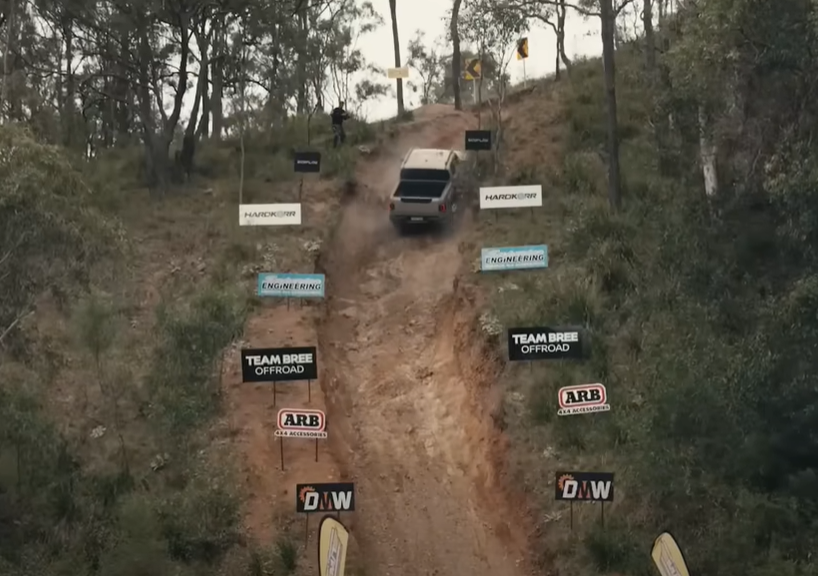
Image credit: Team Bree Offroad (YouTube)
Running nothing but a set of Mickey Thompson Boss All-Terrains, the Tasman is the first of its kind to take on the challenge. With no front locker, the climb wasn’t pretty or slow – it was a momentum-based assault.
“For a rear-locked only vehicle to get up this hill is just incredible,” said Lucas from Team Bree. “It has done an absolutely incredible job. I mean, I want to do it again.”
Beer O’Clock Hill is steep, deeply rutted and peppered with loose rock that’s been known to stop modified rigs in their tracks. The Tasman was pushed hard, but it held its own, showing off solid suspension geometry, a well-tuned traction control system, and real-world off-road ability.
Kia’s clearly aiming to make a statement with the Tasman, and this run up Beer O’Clock Hill proves it’s not just marketing hype. It’s early days, but with results like this, the Tasman is already shaping up as a serious contender for Aussie buyers who want real off-road ability straight off the showroom floor.
The Tasman is slated to arrive in Australia by July 2025, priced from $45,890 driveaway.
LDV has announced full pricing and specs for its Terron 9 ute, with drive-away deals starting from $49,990 for ABN holders.
That price applies to the base Origin variant, while the more upmarket Evolve is listed at $54,990 during launch. These figures reflect a limited-time offer, with regular pricing sitting $1000 higher for both trims. Non-ABN buyers can expect to pay roughly $3,500 to $4,000 more, depending on spec.
| Model | Standard Price (Drive-away) | Launch Offer (Drive-away, Limited Time) |
|---|---|---|
| Terron 9 Origin | $50,990 (ABN) / $53,674 (Retail) | $49,990 (ABN only) |
| Terron 9 Evolve | $55,990 (ABN) / $58,937 (Retail) | $54,990 (ABN only) |
The Terron 9 is powered by a 2.5-litre four-cylinder turbo-diesel making 163kW and 520Nm. An eight-speed automatic transmission and full-time four-wheel drive are standard, and braked towing is rated at 3500kg. Claimed fuel use sits just under 8L/100km.
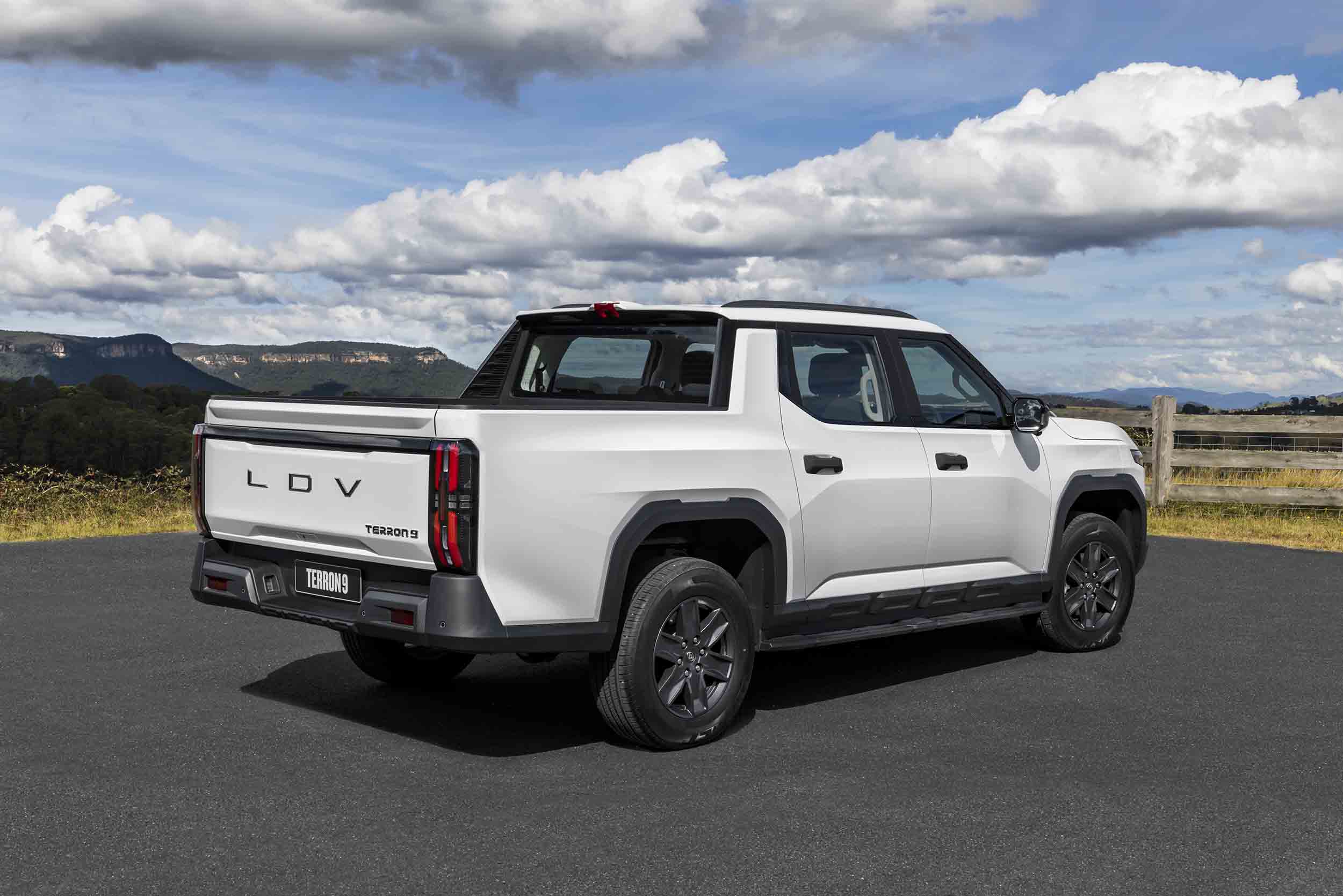
“We want to make sure when a ute buyer walks into an LDV showroom, we have a vehicle that offers value across a range of price points,” said the General Manager of LDV Australia, Dinesh Chinnappa.
“We are not going to leave our traditional ute buyers behind. Rather, the LDV Terron ute series will broaden our offering across the ute segment. We have seen the ute market evolve in recent years, including in the tradie and workhorse space.
“These customers work hard and are often on the road all day, and they appreciate space and comfort as much as family buyers do. So the new-generation LDV Terron 9 has been developed to reflect the changing demands on these vehicles.
“Workhorse no longer means compromise. With the new-generation LDV Terron 9 we are bringing new levels of space and comfort to the ute segment,” Chinnappa said.
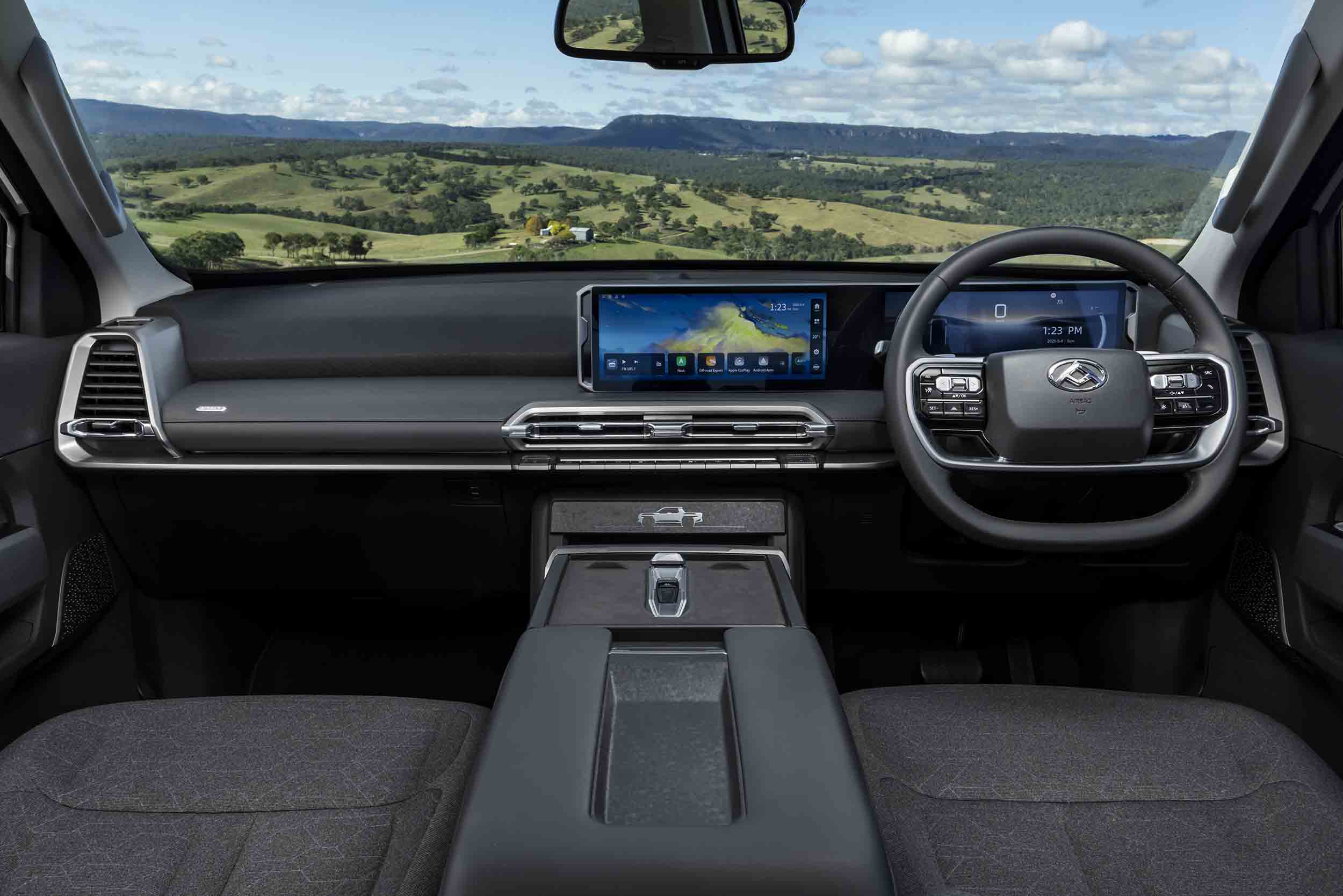
The new platform sees the Terron 9 stretch over 5.5 metres in length and nearly two metres wide, placing it just above mainstream dual-cab competitors like the Ford Ranger and Toyota HiLux.
| Model | Length (mm) | Width (mm) | Height (mm) | Wheelbase (mm) |
|---|---|---|---|---|
| LDV T60 Plus | 5395 | 1900 | 1819 | 3175 |
| LDV T60 Mega Tub Plus | 5710 | 1900 | 1819 | 3490 |
| LDV Terron 9 | 5500 | 1997 | 1874 | 3300 |
Inside, the ute offers features that lean more toward comfort than the bare-bones workhorse some may associate with LDV. The seats are trimmed in leather, with the driver’s chair offering ventilation, massage and power adjustment. Both front seats can also recline fully to form a makeshift sleeping platform – a handy touch for touring and overnighters.
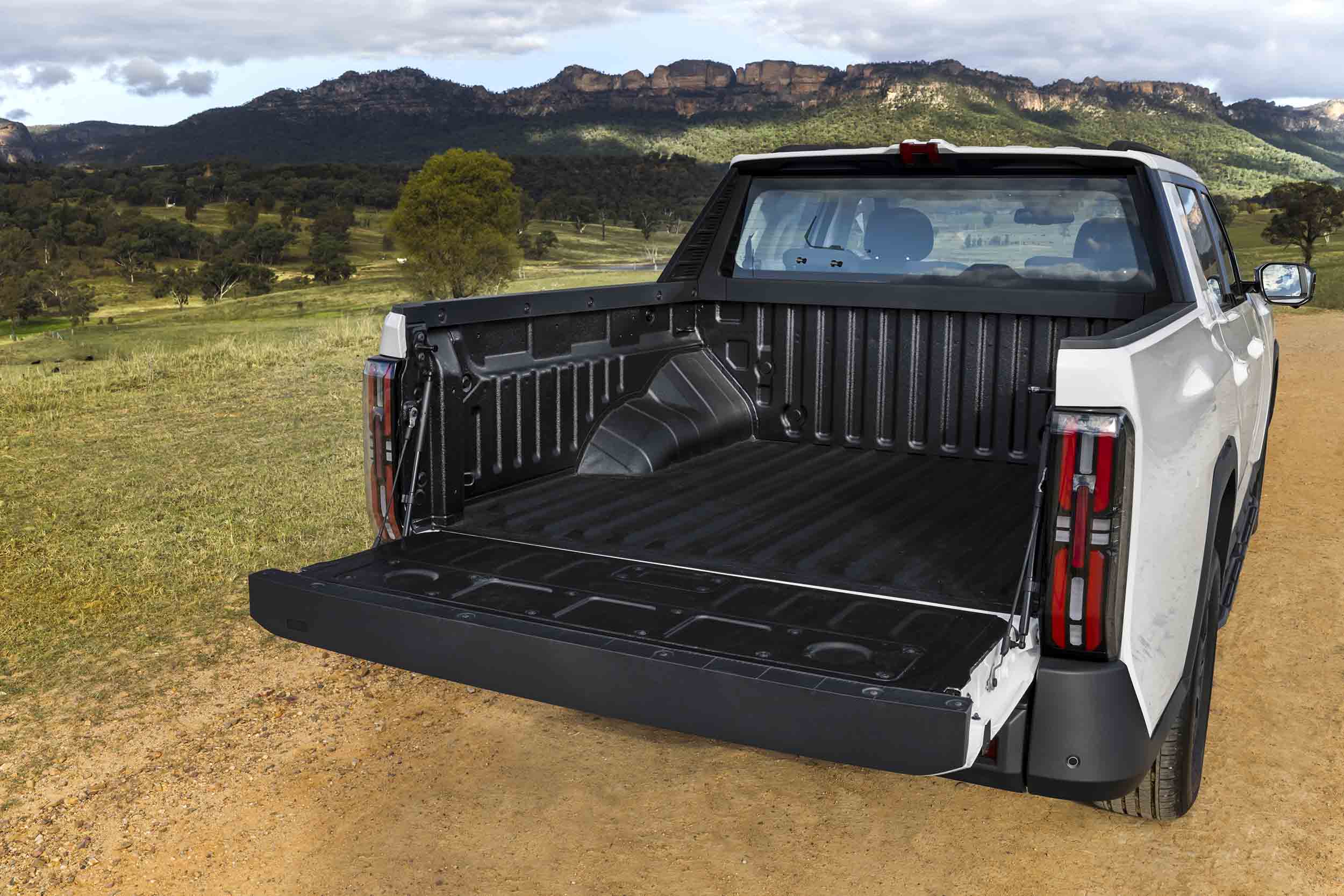
Later in 2025, LDV will roll out an electric version of the ute, dubbed the eTerron 9. This model will be available in rear-wheel-drive and dual-motor AWD variants, offering up to 325kW of output. A 102kWh battery is expected to deliver over 400km of driving range, and like the diesel version, it’ll support 3.5-tonne towing. Pricing hasn’t been confirmed.
All Terron 9 models are backed by a seven-year, 200,000km warranty. The first scheduled service is due at 10,000km, with subsequent intervals every 15,000km.
The Terron 9 will start to arrive in showrooms from next month.
LDV Terron 9 Origin standard equipment
- Dual 12.3-inch widescreen digital displays (instrument cluster and infotainment screens)
- Wired and wireless Apple CarPlay and Android Auto
- AM/FM and DAB radio
- Four-speaker audio
- 2 x USB-A charging ports
- 2 x USB-C charging ports
- 1 x 12V power socket
- Cloth seats
- Six-way electric front seat adjustment
- Bi-LED headlights
- 18-inch alloy wheels
- 265/65/18 highway terrain tyres
- Full size spare tyre on matching alloy wheel
- Towbar and wiring harness
- Rear differential lock
- Spray-in bed liner
- Side steps
- Roof rails (black)
- Tailgate lock
- Tailgate with spring lift assistance
LDV Terron 9 Evolve adds or replaces
- 8-speaker JBL audio
- Eight-way electric front seat adjustment
- Heated and ventilated front seats with massage function
- Heated rear seats
- 20-inch alloy wheels
- 275/55/20 highway terrain tyres
- Front and rear differential locks
- Trailer back-up assistance
- Auto folding mirrors
- Ambient interior lighting
- Cargo bed lighting
- Cargo rails
| Specification | Details |
|---|---|
| Engine | Turbocharged 2.5L four-cylinder diesel |
| Power | 163 kW @ 3800 rpm |
| Torque | 520 Nm @ 1500-2500 rpm |
| Fuel type | Diesel |
| Fuel tank capacity | 80 litres |
| Fuel consumption (combined) | 7.9 L/100km (label figure) |
| Emissions standard | Euro 5 |
| Transmission | 8-speed torque converter automatic |
| Driven wheels | Four-wheel drive |
| Brakes | Four-wheel discs |
| Rear suspension | Leaf spring |
| Length | 5500 mm |
| Width (body) | 1997 mm |
| Width (mirrors folded) | 2045 mm |
| Width (mirrors extended) | 2265 mm |
| Height (including roof rails) | 1874 mm |
| Wheelbase | 3300 mm |
| Ground clearance | 215-220 mm (laden vs. unladen) |
| Turning circle | 13.3 metres |
| Approach angle (unladen) | 29 |
| Departure angle (unladen) | 25 |
| Ramp over angle (unladen) | 20 |
| Wading depth | 550 mm |
| Tub box width | 1600 mm |
| Tub box length | 1600 mm |
| Width between wheel arches | 1230 mm |
| Kerb weight | 2400-2495 kg |
| Gross Combination Mass (GCM) | 6500 kg |
| Gross Vehicle Mass (GVM) | 3500 kg |
| Payload | 1005-1100 kg (depending on grade) |
| Towing capacity (braked) | 3500 kg |
| Towing capacity (unbraked) | 750 kg |
| Max towball down weight | 350 kg |
Great Wall Motors (GWM) has joined BYD by launching a plug-in hybrid 4×4 ute to the Australian market, but unlike the BYD Shark, the Cannon Alpha PHEV is a proper 4×4 with genuine off-road capability.
GWM has created its PHEV on the existing platform of the Cannon Alpha which is a slightly larger and better-equipped version of the Cannon ute. The Alpha is 5445mm long (35mm longer than Cannon Ute), 1991mm wide (57mm wider than Cannon Ute) and 1924mm high (38mm taller than Cannon Ute). The wheelbase of 3350mm is longer than that of a Cannon Ute by 120mm.
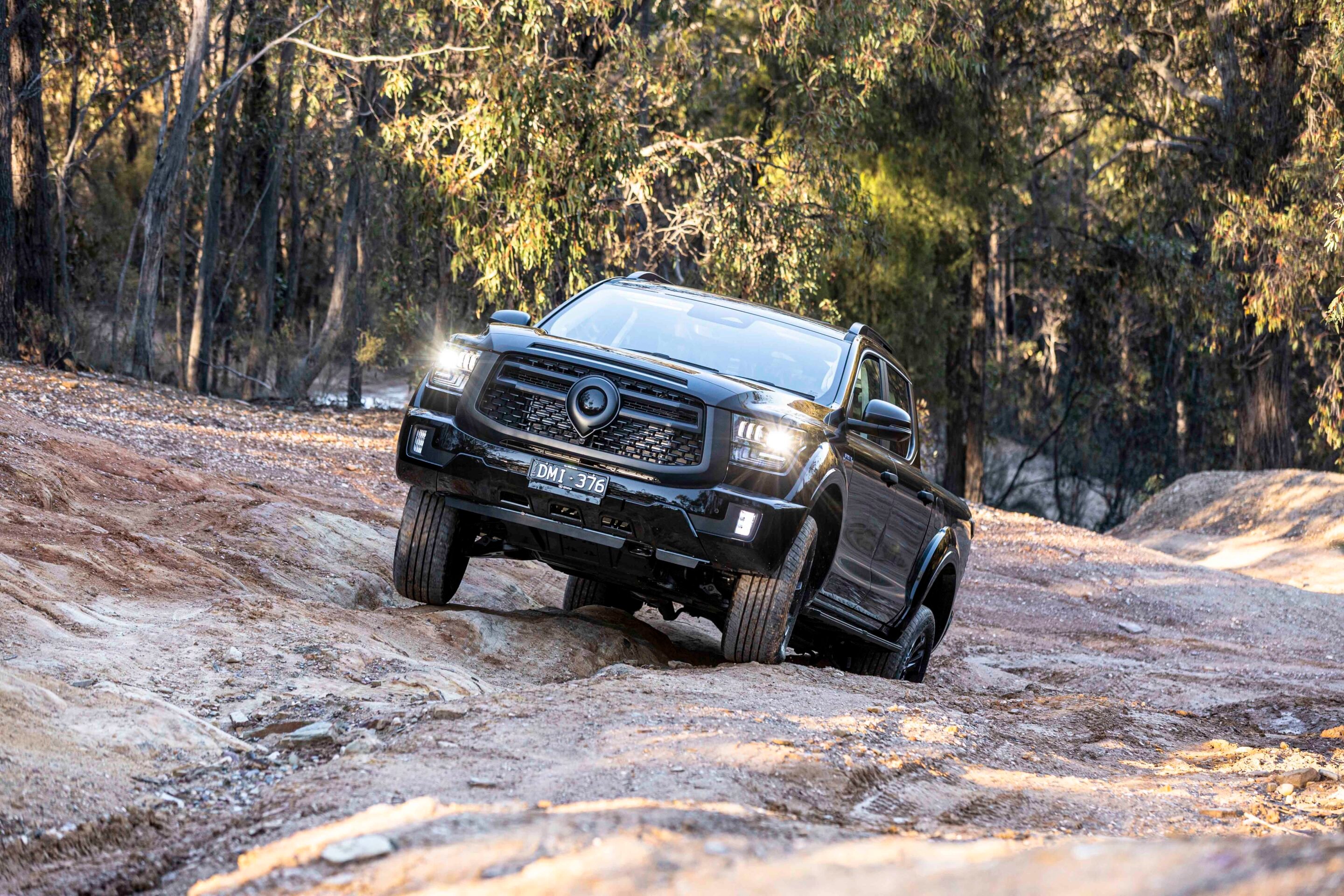
GWM released Australia’s first hybrid EV 4×4 ute in Australia in the middle of 2024 and this updated model is a plug-in version of that vehicle. GWM still offers the hybrid model as well as diesel-fuelled variants and now the PHEV. Two specification grades are offered – Lux and Ultra – and we have the Ultra PHEV on test here.
The big difference between the GWM and BYD utes is that the Cannon Alpha has a more conventional drivetrain with a nine-speed automatic transmission, dual-range transfer case and a tailshaft leading back to a live rear axle. In the case of the BYD Shark 6 the only connection between the front and rear axles is electronic – there is no mechanical connection – which limits its off-road ability.
JUMP AHEAD
Powertrain
The Cannon Ultra PHEV driveline comprises a turbocharged 2.0-litre petrol engine and an electric motor that is located within the transmission bell-housing along with the torque converter. Combined they deliver an output of 300kW and 750Nm and this is fed to a dual-range, on-demand 4×4 system.
The ICE engine makes 180kW and 380Nm on its own but when combined with the electric motor produces outputs exceeding that of most conventional ICE powered 4×4 utes. On and off road, the combined output gives the GWM impressive acceleration despite its 2800kg weight. Torque is king and the Cannon launches like it was shot out of an… umm, cannon. It even has a specific launch mode for quick getaways after you’ve waded through the menus to find and engage it.
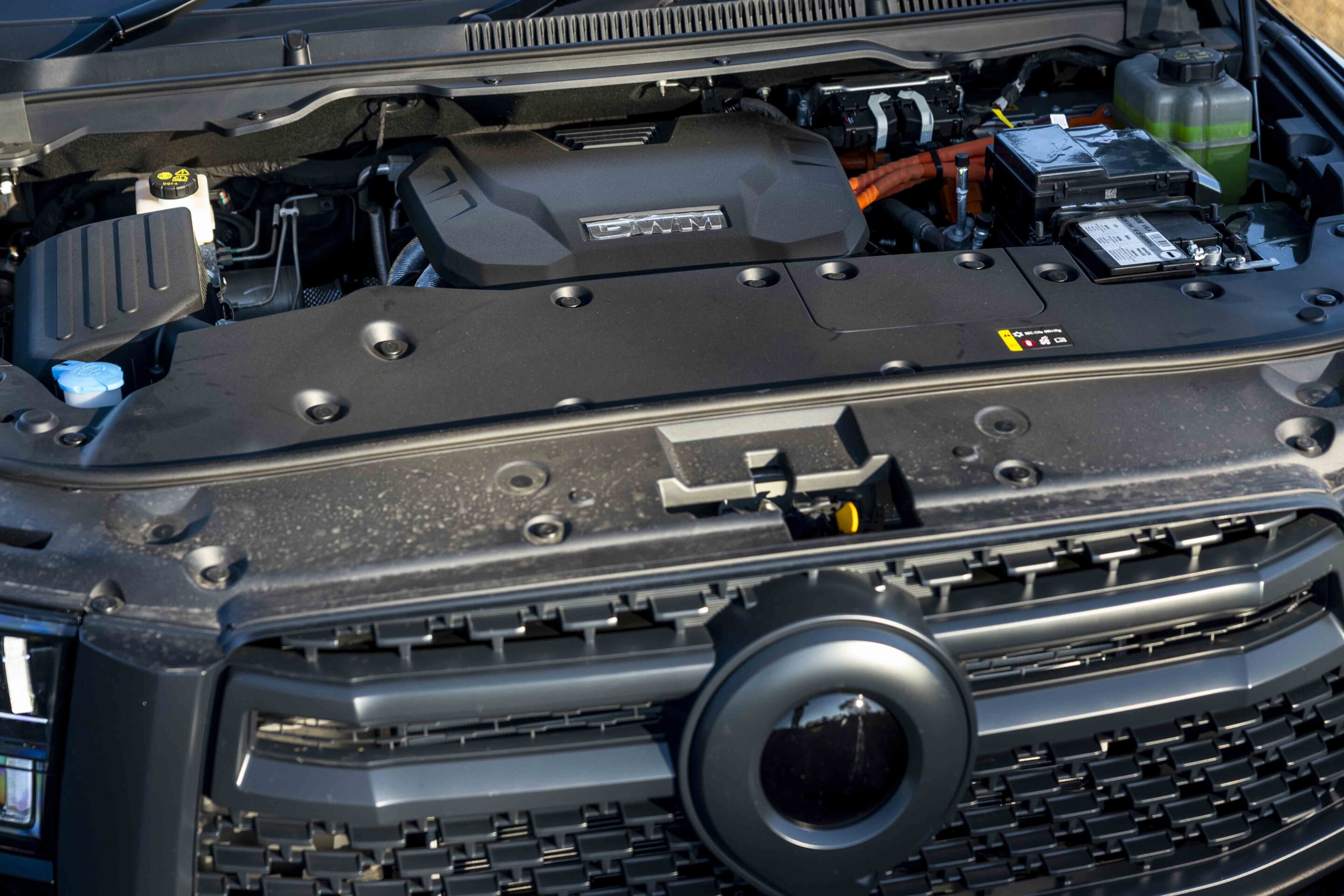
GWM claims that the Cannon Ultra has an EV range of 115km and a combined ICE and EV touring range of 1060km utilising the 75-litre petrol tank. The system has multiple modes to prioritise drive to your conditions with EV priority, full EV and intelligent modes.
Charging times from a DC charger are claimed to be 24 minutes from 30-80 per cent charge. There’s comprehensive info on the multimedia screen on the charging status and time, and you can also check it remotely via the GWM app. Filling the fuel tank with petrol is always simple and quick.
On the road
The Cannon’s acceleration is brisk, but you do feel its heft. Once up to speed it cruises smoothly and quietly whether in EV mode or when the ICE unit is in operation. An annoyance I found was the way the vehicle decelerates so much whenever you lift off the accelerator. This is because of the regenerative charging action of the hybrid powertrain , but if I wanted the Cannon to slow so much I’d use the brakes and not have the system doing it for me.
A further annoyance is the driver monitor that constantly harangues you. You can disable it, but again you have to go through the screen menus every time you start the vehicle to shut it up. On gravel surfaces the Ultra rides nicely over small corrugations and ruts inspiring confidence in the chassis and handling. It’s firm while still compliant enough to provide a comfortable ride.
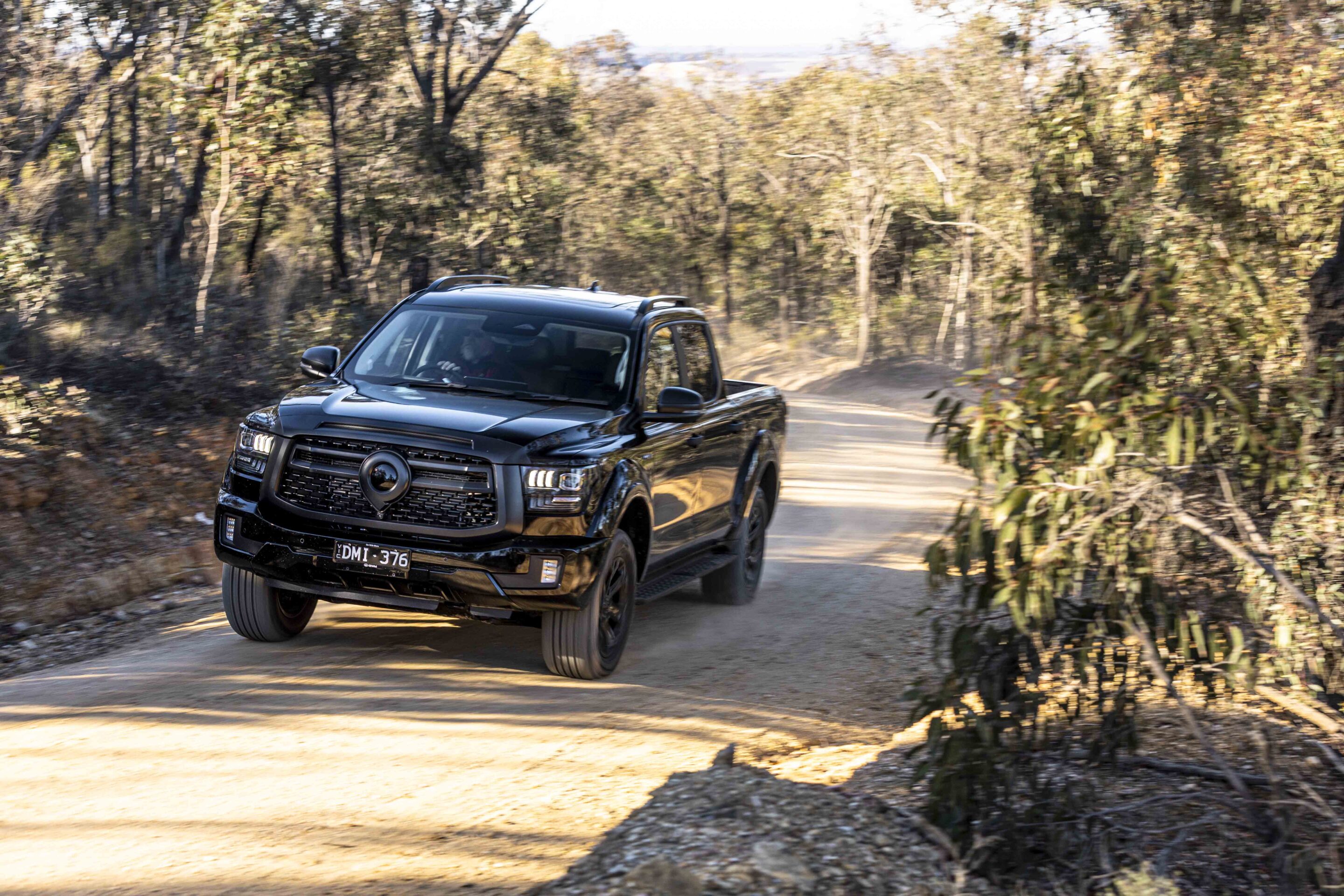
Off the road
Off road and in low range the ute makes easy work of uneven terrain and lifting wheels are countered by fast-acting ETC without having to engage the Ultra’s front and rear locking diffs. That’s right – the Cannon Alpha has front and rear lockers standard from the factory, something you can only find in a Ranger Raptor elsewhere in the midsize ute class. The ETC is a bit noisy in its operation and not as smooth as the best systems out there but it gets the job done.
The wishbone front end has the usual IFS limitations causing the aforementioned wheel lift while the leaf-spring live-axle rear articulates okay, if not amazingly. Combined with the front and rear lockers, the overall off-road package of the Cannon Alpha is pretty impressive.
| Off-road specs | |
|---|---|
| Approach angle | 28.5 |
| Ramp-over angle | 19 |
| Departure angle | 23 |
| Ground clearance | 210mm |
| Wading depth | 800mm |
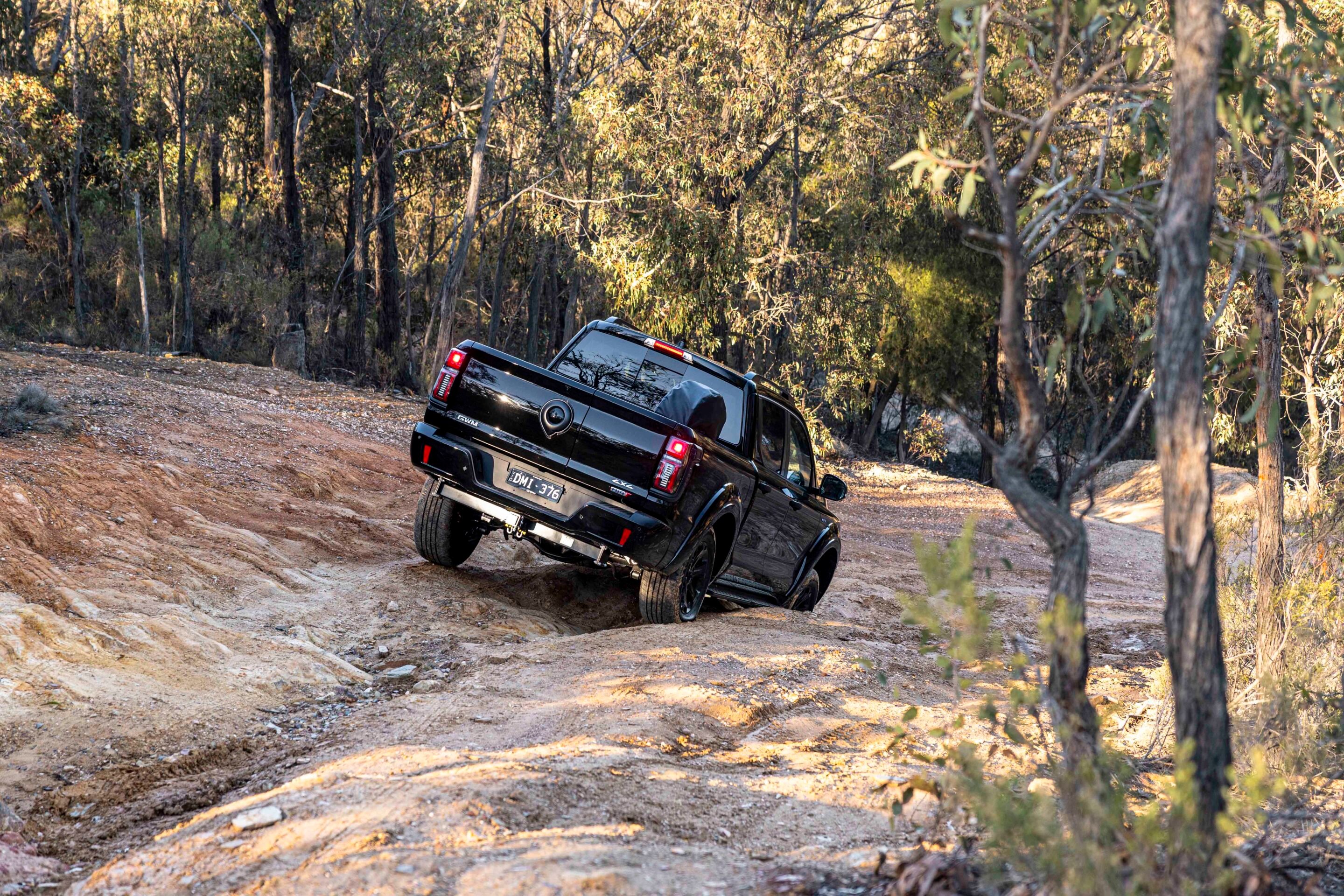
Interior
Also impressive is the array of standard equipment inside this ute. The 14.6-inch infotainment screen takes pride of place in the centre of the dash and is both big and easy to see and use. It is home to all the usual system settings, controls, Apple Carplay and Android Auto mirroring functions.
Unfortunately the only volume adjustment is via a slow-acting toggle on the steering wheel and the cabin temperature adjustment is all within the screen. This is annoying and somewhat dangerous as, if you like me, you drive with Carplay on most of the time, to adjust the cabin temperature you need to go into another menu, find the appropriate control and make the adjustment. When doing this the driver monitoring system will tell you to pay attention to driving and drive carefully, which is super annoying.
The Napa leather-covered seats are ventilated, heated front and rear with massaging on the front pews. The rear seats also have an electric slide and recline function that reduces the angle of the upright backrest that is customary in double-cab utes however, if a tall driver has his/her seat all the way back, it doesn’t leave a lot of space for the seat behind to slide forward and recline. But even in a normal, upright position there’s plenty of leg and headroom in the back for most passengers.
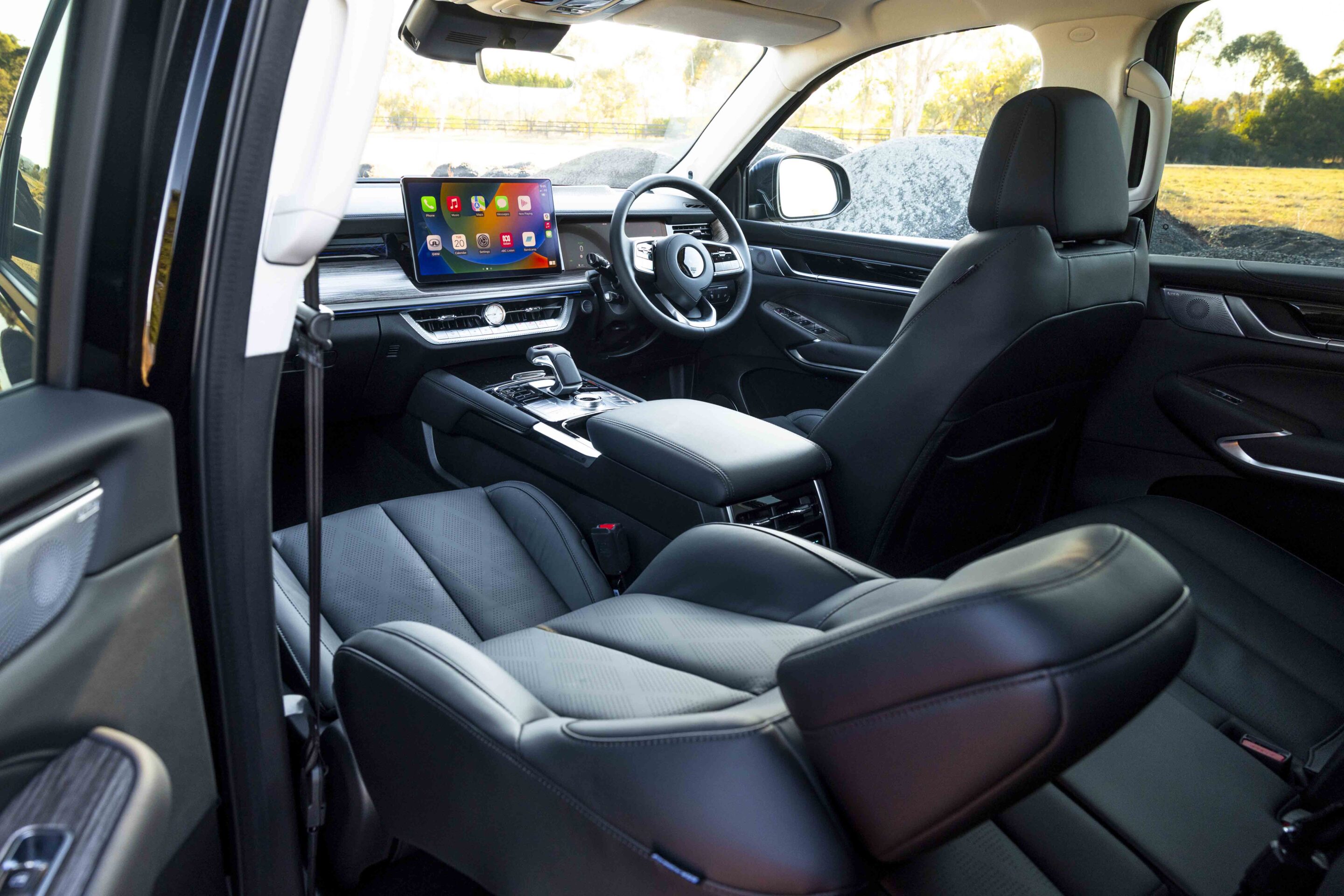
How practical is it?
Like the locking diffs, the level of features in the Ultra is a rare find in the midsize ute segment and one that is appreciated. Also appreciated is the large cargo tub that has a unique tailgate setup that can be opened in the traditional drop-down manner or swing-out via a vertical split.
The tub offers 1100mm between the wheel arches but in the PHEV, the spare wheel is mounted in the tub as the EV battery pack takes up the space below the tub where the spare would normally reside. There’s also a power outlet in the back to run power tools and accessories off the Cannon’s battery. On our drive, the vinyl cover over the spare tyre kept blowing off so we ended up removing it all together.
Important for many users is towing capacity and the Cannon PHEV retains the non-EV model’s 3500kg maximum braked towing capacity. Not so good is the 685kg payload which means that owners will have to be cautious with how much they load into their Cannon, especially if they have anywhere near the maximum 350kg on the towbar.
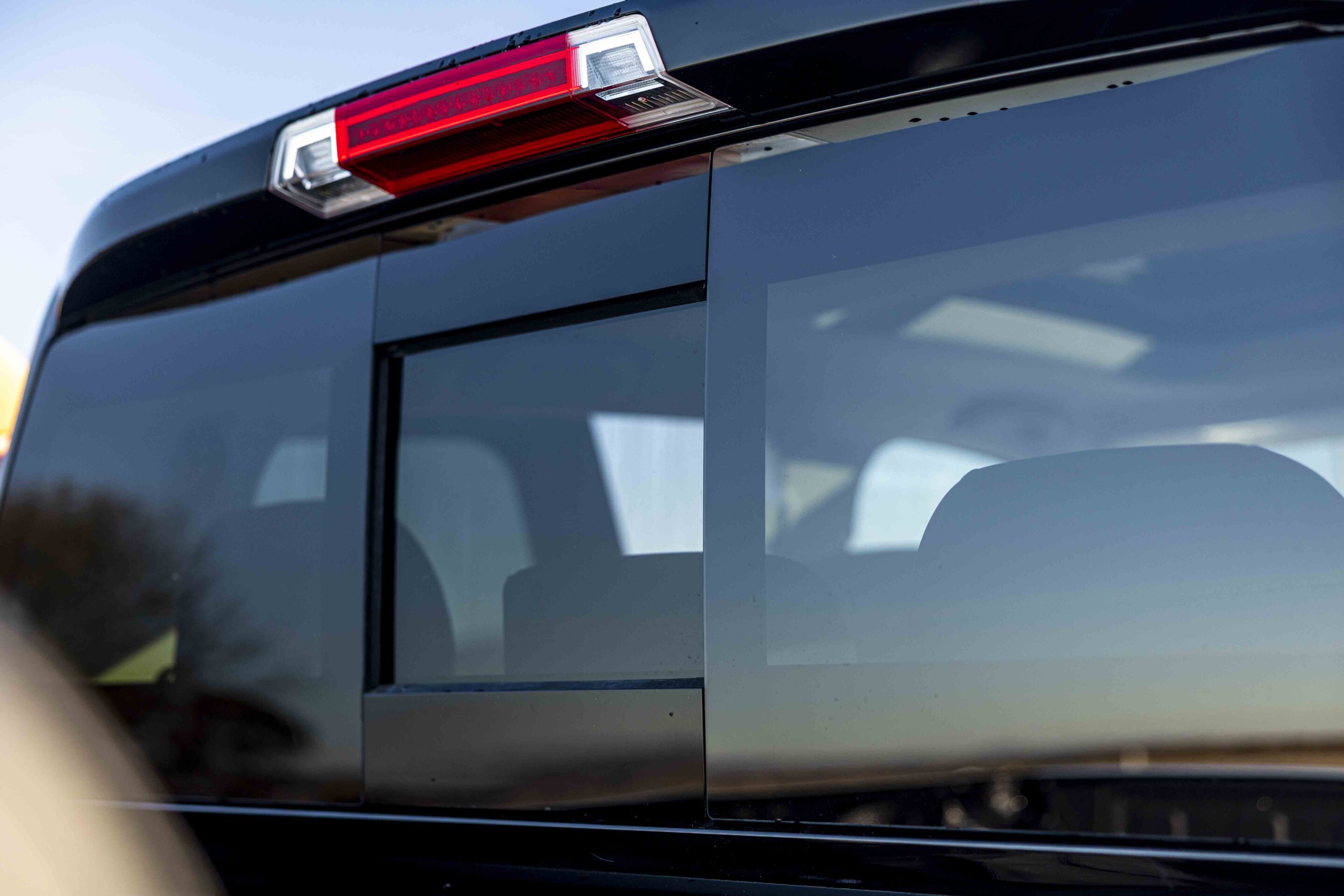
Safety and warranty
The Cannon Alpha has all the standard ADAS and safety features needed to give it a 2025 five-star ANCAP rating. It’s just a shame that the driver monitor system is so intrusive and annoying.
The GWM comes with a seven-year factory warranty, seven-year roadside assistance and capped-price servicing, and an eight-year warranty on the lithium EV battery pack.
Verdict
The GWM Cannon Alpha PHEV gives buyers wanting an electrified ute an option that delivers hybrid fuel efficiency with genuine off-road capability in a luxurious and spacious vehicle for a very attractive price and ownership package.
It’s a package that hasn’t been available in Australia until now, and until we spend some time in the Ranger PHEV, it offers the best all-round combination of all the key elements; this is especially so in the top-spec Ultra trim with the $67k price. For reference, the Ford Ranger PHEV will start at $72k and go up to $87k for the top-spec model.
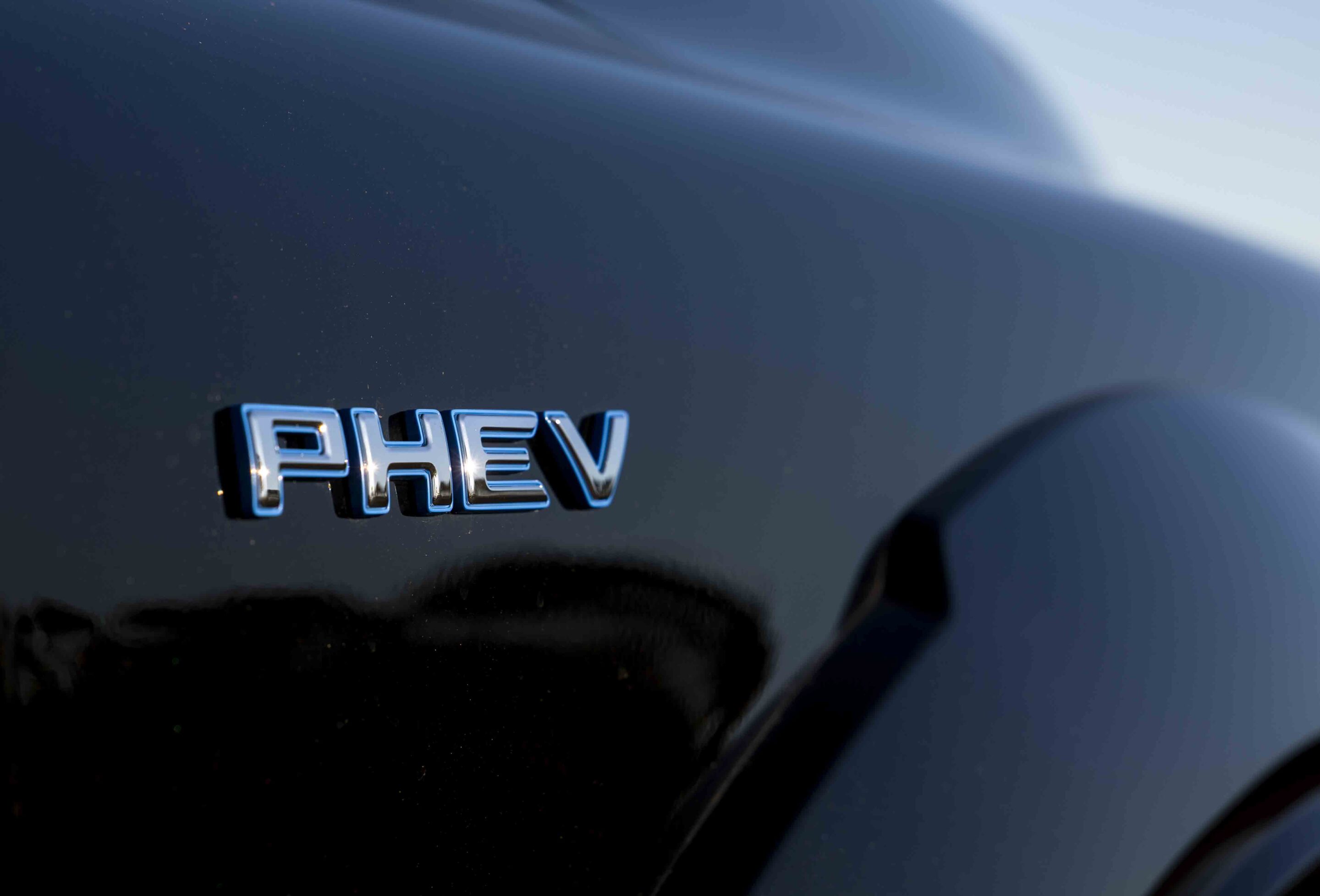
Specs
| GWM Cannon Alpha PHEV specs | |
|---|---|
| Price | $66,990 |
| Engine | Petrol ICE with electric motor |
| Capacity | 2.0L |
| Max power | 300kw (combined) |
| Max torque | 750Nm (combined) |
| Transmission | 9-speed automatic |
| 4×4 system | On demand/dual range |
| Construction | 4-door ute on ladder frame chassis |
| Front suspension | IFS, double wishbones, coil springs |
| Rear suspension | Live axle with leaf springs |
| Tyres | 265/60R18 on alloy wheels |
| Kerb weight | 2810kg |
| GVM | 3495kg |
| GCM | 6745kg |
| Towing capacity | 3500kg braked |
| Payload | 685kg |
| Seats | 5 |
| Fuel tank | 75L |
| ADR fuel consumption | 1.7L/100km combined hybrid |